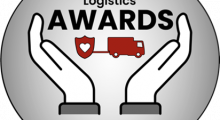About six years ago, Russ LaBelle, president of blow molding and injection molding machine maker Wilmington Machinery, noticed that 90% of sales inquiries for the injection machines were for making plastic pallets.
“Prior to that, we were building a ‘general purpose’ machine that could make plastic pallets, but it was extremely expensive,” recalls LaBelle. “So we engineered five different machine models—each designed to create different types of plastic pallets, from a one-way nestable to a heavy-duty, one-piece double deck—to reduce the entry costs.”
Of course, the equipment is by no means cheap. Depending on the style of pallet desired and the quantity required (Wilmington’s machines can crank out anywhere from 240,000 to 900,000 pallets per year), costs run from $1.5 to $5 million. But, for certain companies and particular areas of the world, the ability to produce plastic pallets in-house can be cost justifiable, LaBelle says.

“We currently have four machines under construction, and they’re all destined for overseas purchasers,” he says. “In the United States, wood is roughly $0.16 a pound, whereas plastic resin can be $0.90 a pound, so it’s more difficult to justify. But, in the Middle East, for example, plastic resin and electricity are far less expensive. Further, in many Asian countries—particularly China—the demand is very high for plastic pallets.”
Potential purchasers of Wilmington’s plastic pallet making machines include current wood pallet manufacturers who see an opportunity to expand their offerings in plastic, as well as start-up companies looking to tap the demands of the Asian and Middle East markets.
“There’s also a lot of interest from plastic recyclers,” adds LaBelle. Because the machines use structural foam injection molding to create the pallets, they don’t require virgin plastic.
“The machines can use 100% recycled polyolefin plastic—which includes polyethylene and polypropylene—in flake form. As long as the material is clean and dry, it doesn’t have to be repelletized first, which is not only a time and cost savings but also allows the material to retain more of its intrinsic strength properties,” he says.
Think you might be ready to make your own plastic pallets? Wilmington Machinery has published a free white paper, “Plastic Pallets Made Easy,” that explains both the process and the financial justification calculations to help you get started. It’s available on their
Web site.







